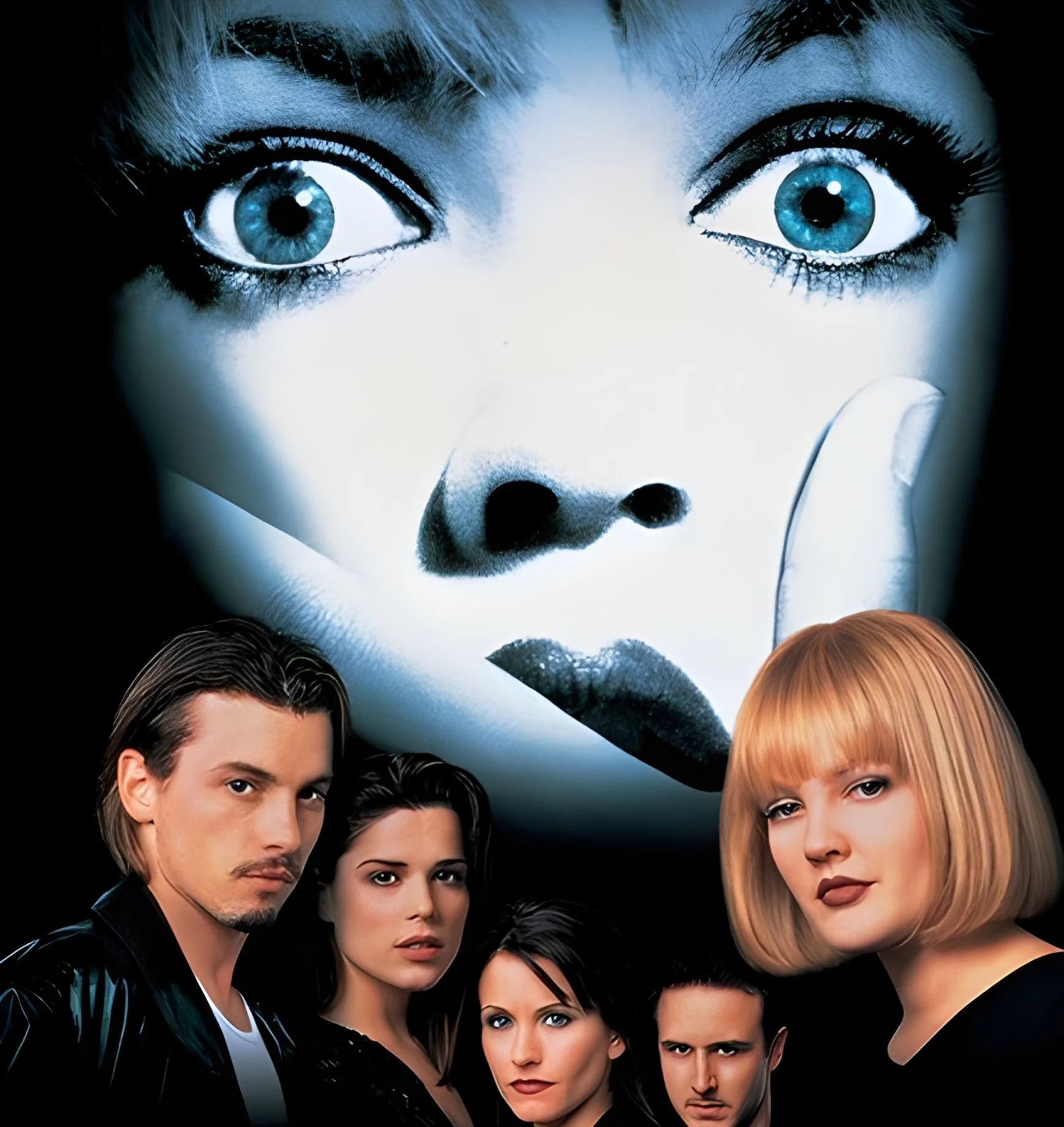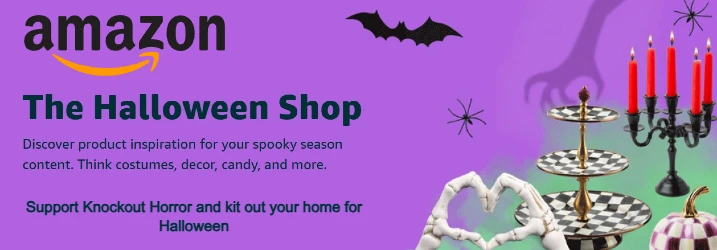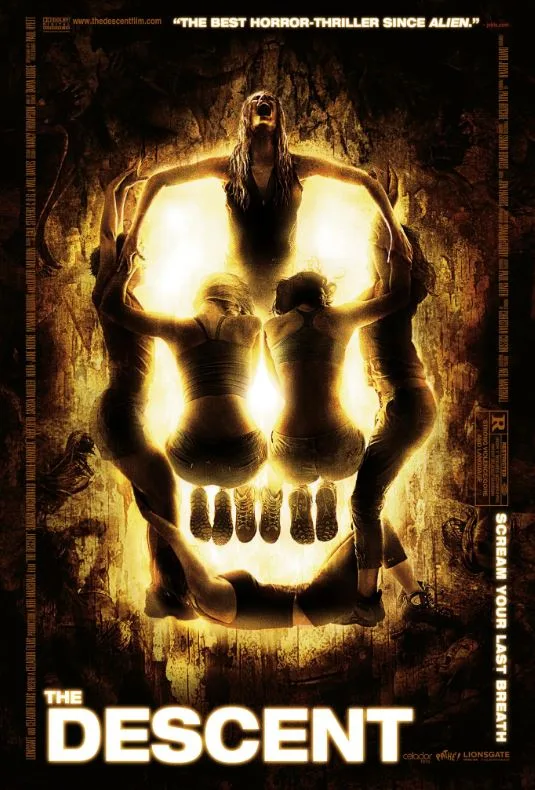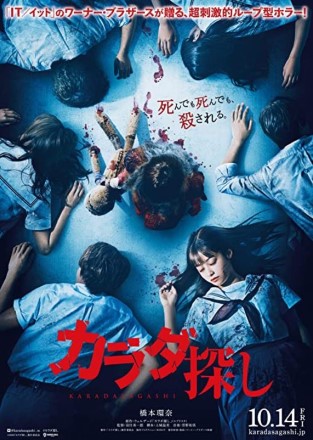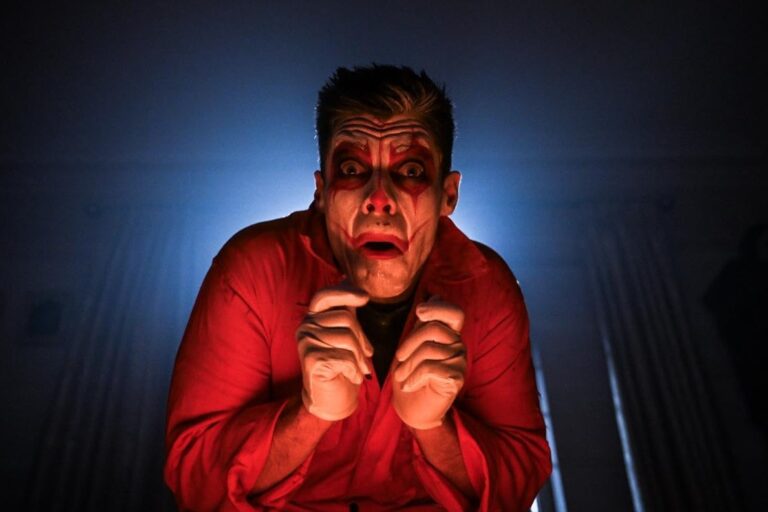Scream (1996) – A Horror Movie Review a Day Halloween 2025 - October 22nd
Welcome to Knockout Horror. It’s day 22 of our 31 days of Halloween 2025 movie-review-a-day feature. The movie we are looking at today transformed the entire face of horror back in the mid-90s. The world had suddenly turned its back on formulaic slashers. The appetite for ghouls and ghosts was at an all time low. The entire genre needed a change. Horror was desperate for a completely different, entirely more intelligent, and distinctly cooler edge. That edge came in the form of Wes Craven’s meta slasher Scream.
The story follows high school student Sidney (Neve Campbell) and her friends. After the brutal murder of a fellow student and her boyfriend, rumours begin to spread that the killing was no mere coincidence. There is a murderer stalking the town dressed in a frightening costume and he is determined to bring an entirely new type of fear to the town of Woodsboro. Sidney and her friends must use their knowledge of horror movies to survive the relentless attacks of the maniacal killer, Ghostface.
A Genre on Life Support
The early 90s marked a significant downturn in the popularity of the horror genre. The world was just coming off of a decade absolutely packed with slashers and iconic horror villains. Freddy Krueger was running rampant, Jason Vorhees was amassing an impressive kill count, and Michael Myers was terrorising neighbourhoods. Alongside these iconic figures, others emerged like Child’s Play’s Chucky and Hellraiser’s Pinhead. It seemed as though you couldn’t remotely consider producing a horror movie without a memorable lead antagonist.
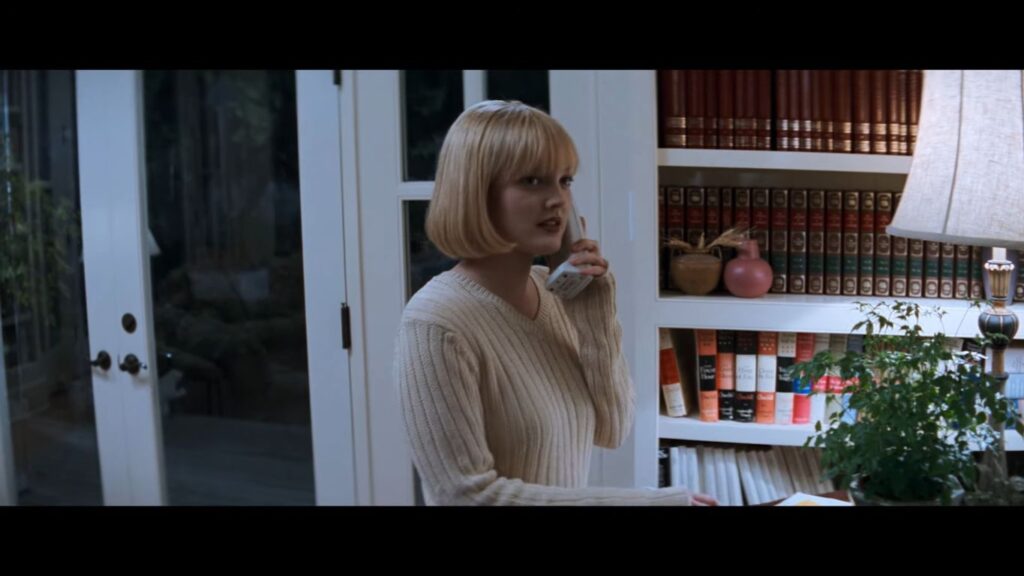
By the time the 90s rolled around, people were experiencing something of a slasher hangover. With each new entry into these well known horror franchises came more tropes, less creativity, and a distinct sense that filmmakers were simply cashing in on well loved characters. Horror suddenly became a dirty word. Movies like The Silence of the Lambs and Se7en that would otherwise be classed as horror adopted the thriller tag instead.
Horror needed a new lease on life. It needed to become cool again. We saw the first hint of a change in Wes Craven’s New Nightmare (1994). Could it be that the one thing to breathe life into the flagging genre was poking fun at it? New Nightmare was extremely meta, self-aware, and entirely unafraid of chuckling at its tropey slasher heritage. It could probably be argued that this was the movie to truly lay the groundwork for what was about to come.
The Slasher for a Sceptical Generation
The advent of horror regaining its popularity came with 1996’s Scream. This wasn’t an ordinary slasher. Sure, it was trope heavy; the lead character was a virginal girl with a harrowing past, the killer was almost omnipresent, the kills were heavily projected. But it was incredibly aware of that fact and was about to turn it against the viewer.
From the very opening scene where the movie’s assumed star, Drew Barrymore, is brutally slain to set up the story. Scream was here to turn the genre on its head and keep you guessing. If the most well known young actor in the cast who is front and centre on the poster is killed off in minutes. What else can you expect? It was all deliberate and used to create a brand new way of executing the overly formulaic and massively stale slasher film.
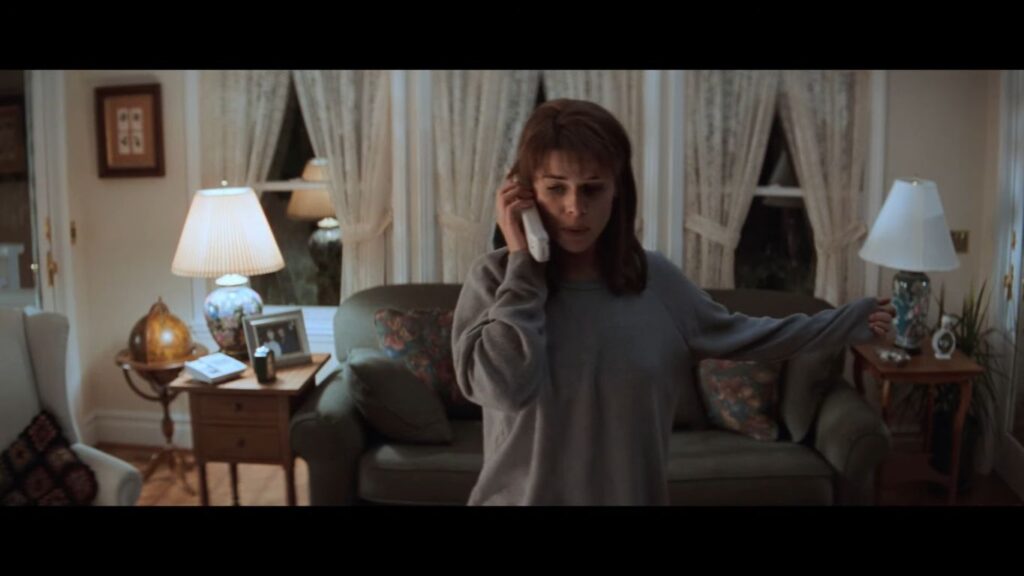
The characters here had their fingers on the pulse of horror movies and knew all the rules. “What’s the point? They’re all the same. Some stupid killer stalking some big-breasted girl who can’t act who is always running up the stairs when she should be running out the front door. It’s insulting.“. Quotes like these when Sidney is asked whether she likes scary movies demonstrated a level of self-awareness that was rare in the genre.
Scream was going to succeed by pointing out horror’s flaws and rolling its eyes at them. It would poke fun at its killers, chuckle at the cliches, and mock the rules. The victims were far from likely to just lay down and accept their fate. It would play all your favourite hits before pulling the rug out from underneath you with some clever narrative misdirection, just when you thought you had it figured out. Scream felt fiendishly clever and ultra relevant; this was horror tailor made for Gen X who were increasingly sceptical and far less easy to please.
Still Cool, or Just a Bit… 90s?
So how does Scream hold up nearly 30 years later? Well, to be honest, it’s difficult to say. Released today, there’s no doubt this movie would attain a decent level of success. But its impact has been dulled by the myriad copies and multitude of sequels. It’s like throwing on a pair of jeans from the mid-90s.
Sure, they were cool back then and people who were around at the time probably remember them fondly. But don’t expect showing them to your kids to result in anything other than sighs of embarrassment and a few eye-rolls.
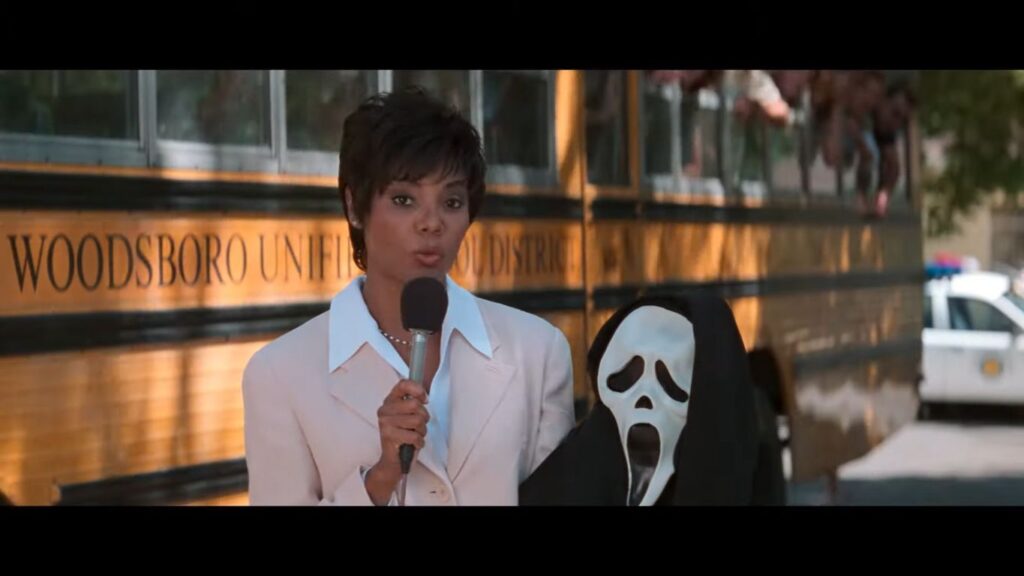
Weirdly enough, the single biggest thing to dampen my enjoyment of this film was the fact that Scary Movie does such a good job lampooning it. Scream is so deliberately tropey that it makes Scary Movie feel less like a parody and more like a one-to-one rip off with a few extra jokes. Scream is a movie that was designed to be trend setting when it released. Despite feeling extremely relevant and “cool” back in the mid-90s, that timeliness means it feels rather outdated now.
The same thing that happened to slashers in the 80s that inspired this film’s plot has happened to the teen slasher in subsequent years. So many of them rushed to feel current and meta that Scream now feels overly familiar. It’s something of a shame, really, because this is the film that started it all. Scream is responsible for reviving the slasher genre and giving birth to the popularity of the teen slasher genre itself.
How Scream Played (and Won) Its Own Game
Looking at this movie objectively, you can see why it succeeded. Given the context, it feels extremely clever in a really weird way. It doesn’t try to avoid the tropes that it is making fun of. In fact, it leans into them. In some instances, the characters actually draw attention to how they are falling victim to typical slasher movie fare. A concept that is pretty daring when you think about it. In a lot of ways, it’s not all that inventive but the manner in which it uses said tropes to ultimately subvert expectation is pretty great.
Sidney, as a protagonist, is rather atypical in as much as she isn’t some busty bimbo. She is your usual virginal lead girl but she has reasons that go beyond simple virtue. She also goes through a level of growth that most characters like this simply don’t experience. Sidney is very aware of horror movie faux pas, as well; she isn’t going to run up the stairs, she is going to try to escape through the front door.
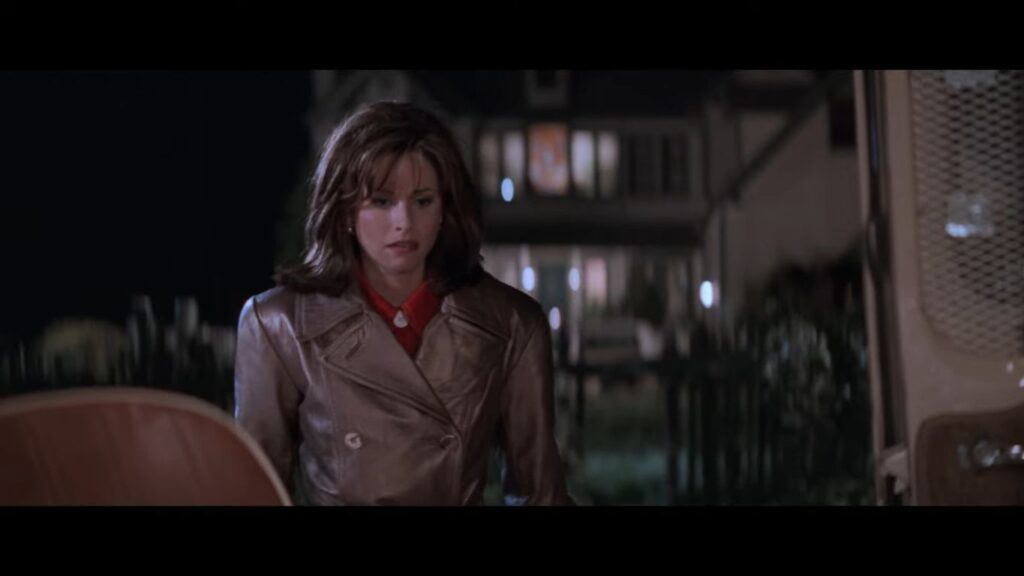
The rest of the cast are your typical teen horror staples. After all, Scream defined a lot of these tropes. They are all acutely aware of their place in the horror movie cycle and reference that constantly. Will they be victims? How would they react in a certain horror scenario? Would they fight back or play along? It’s interesting stuff and this is the real place where Scream succeeds. It has a lot of respect for the viewer.
Gen X are a naturally sceptical generation. Craven leans into this by recognising that they are going to be coming into this movie with a jaded perspective towards the genre itself. He knows what they will expect so presents it to them before using it to subvert expectation.
He knows he isn’t going to fool this audience with the same tricks that worked in the 80s. They have grown up rolling their eyes at it. Instead, he acknowledges their awareness and crafts the kills and scares in a way that will surprise them. It works extremely well, even if it is now over familiar to a modern audience.
A Cast That Was a Cut Above
Craven was a fantastic choice to direct Kevin Williamson’s story. He has such a natural feel for the slasher genre that he manages to set the movie up in a way that feels completely authentic. The suburban setting, the high school backdrop, the random parties. Scream feels like a traditional slasher movie which makes the subverting of expectation all the more effective.
The kills are predictable but a hell of a lot of fun. The victims here actually fight back, giving Ghostface a real run for his money on a number of occasions. You can tell that Craven didn’t want his villain to feel supernatural. This is an altogether more realistic and believable approach to horror.
The cast would all go on to tremendous success and they feel a cut above your standard teen slasher fare. Neve Campbell does a great job in the lead role. Rose McGowan has some strong moments as her best friend Tatum. Matthew Lillard is frequently a blast and Skeet Ulrich comes on strong later in the movie as Sidney’s boyfriend Billy.
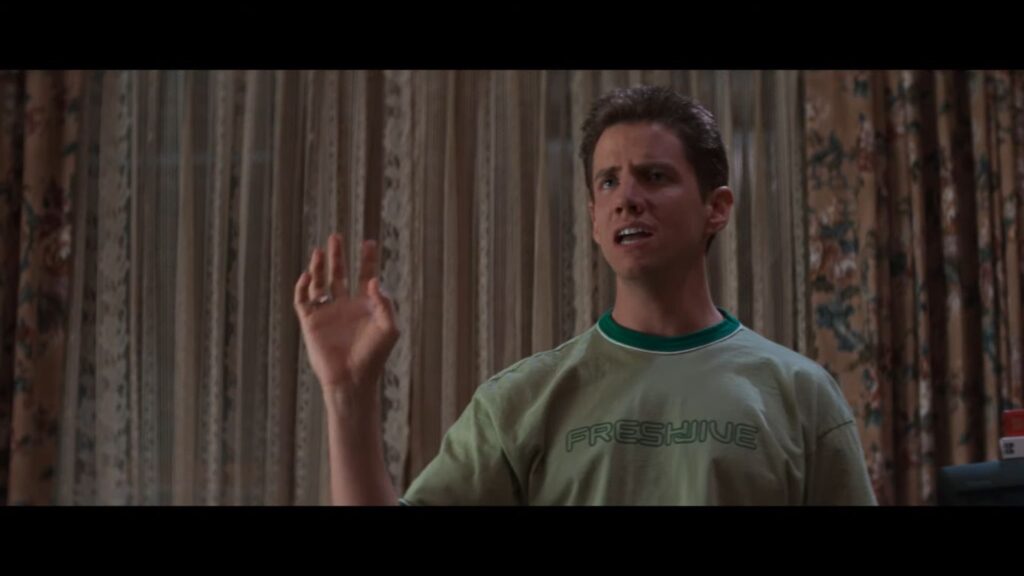
Jamie Kennedy is a nice addition to the cast, too. His character acts as almost an avatar for the viewer. Deconstructing horror tropes through a lifetime of knowledge gained from indulging in pop culture. Courtney Cox, still at the height of her Friends fame, would create an iconic horror protagonist in the fierce Gale Weathers, as well.
The movie’s big reveal still works extremely well. Sure, hindsight is a bitch when it comes to horror but a lot of people didn’t see this coming. The movie hints at it so much that it almost seems too obvious but there’s enough narrative misdirection to keep it surprising.
Should You Watch Scream?
Scream is a tough movie to review through a modern lens. What felt fresh, daring, and new 30 years ago feels overly familiar now. It’s been done to death and there are too many sequels. With that being said, this is such an important movie. It helped revive horror, kicked off the teen slasher genre, and showed that horror writers and directors could still subvert expectation. Even if that meant using their own work as a canvas for mockery. The kills are effective, the reveal is still a lot of fun, and it’s wickedly clever. Scream is essential viewing for horror fans, even if it doesn’t hit in the same way as it did back in the 90s.
Our Scoring Philosophy: A Fair Fight
Horror is a genre that thrives thanks to indie film makers and low budget creators. At Knockout Horror, we firmly believe that every movie that we review deserves a fair fight. That's why we grade on a curve. Our star ratings are all about context, judging a film on what it achieves with the resources it has.
A 4-star rating for a scrappy indie horror made for $10,000 is a testament to its ingenuity and raw power. A 4-star rating for a $100 million blockbuster means it delivered on its epic promises. We don't compare them side-by-side; we celebrate success in every weight class, from the back-alley brawler to the heavyweight champion. Please keep this in mind when considering star ratings.
Disclaimer: Images, posters, and video stills used in this review are the property of their respective copyright holders. They are included here for the purposes of commentary, criticism, and review under fair use. Knockout Horror makes no claim of ownership and encourages readers to support the official release of all films discussed.

